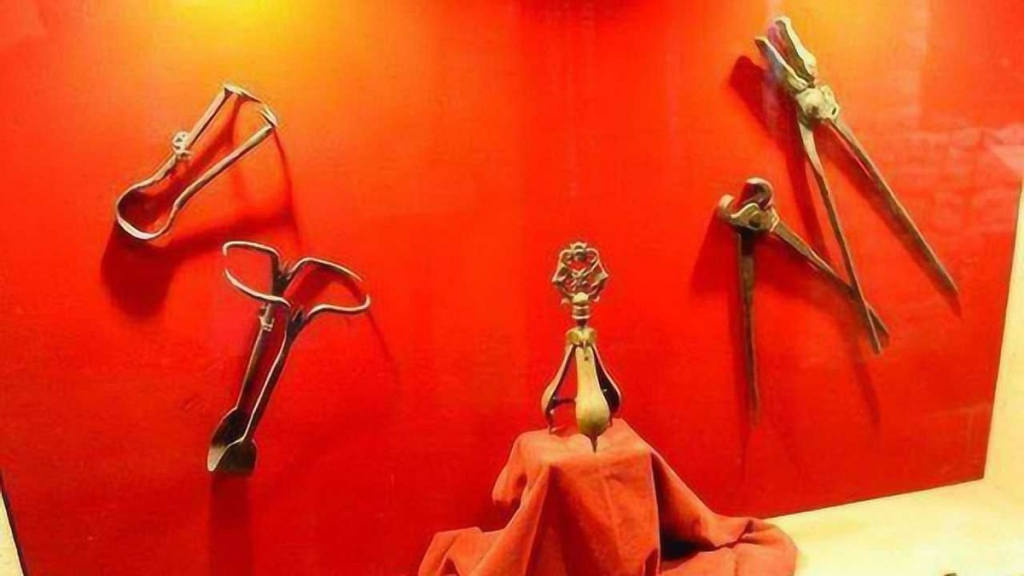When Cersei Lannister was forced to walk naked through the streets in Game of Thrones, pelted with rotten food and insults, many viewers cheered at the poetic justice. But public humiliation as a form of punishment is far from fictional—it was a brutal reality in medieval Europe.
Yet, stripping someone of their dignity in public was just the beginning. History is filled with ghastly torture devices designed not just to punish but to utterly break a person. Among them, the Pear of Anguish and the Scold’s Bridle stand out as particularly horrifying.

The Pear of Anguish: A Blossom of Pain
At first glance, this device might remind you of a metal flower bud. But make no mistake—this was no garden variety instrument. The Pear of Anguish (also called the torture pear or opening pear) was a 16th-century European tool of torment.
Shaped like a bulb with petal-like segments, this device expanded outward when a screw was turned. Used on accused blasphemers, heretics, or even those guilty of homosexuality or witchcraft, the Pear of Anguish was inserted into the mouth, vagina, or rectum. As the torturer twisted the handle, the “petals” slowly expanded, stretching tissues beyond their natural limit. Some versions were embedded with spikes, ensuring that every turn caused excruciating pain and permanent damage.
Imagine someone inserting an umbrella inside you and then opening it—that’s the level of agony we’re talking about. While this device rarely resulted in death, it left victims in unbearable suffering, often leading to permanent disfigurement.

The Scold’s Bridle: When Gossip Was a Crime
While the Pear of Anguish targeted so-called moral crimes, the Scold’s Bridle (also known as the brank) was designed specifically for women accused of gossiping, lying, or simply speaking too much. Yes, in medieval Europe, having a sharp tongue could quite literally get you muzzled.
The Scold’s Bridle was an iron mask that enclosed the head, often with a metal plate pressing down on the tongue. The slightest attempt to speak resulted in searing pain. Some models even had spikes inside to pierce the tongue when movement was detected.
And because simple suffering wasn’t cruel enough, these contraptions were designed to publicly shame the wearer. Many included bells or whistles that would jingle with every movement, ensuring that everyone in the town square knew exactly who was being punished.
Historical records describe women being paraded through the streets, blood dripping from their mouths, unable to utter a sound as they were mocked, beaten, and pelted with waste. One 1665 report from Newcastle details how Anne Bredestone was led through the streets with a Scold’s Bridle so tight that “blood gushed from her mouth.”
The Legacy of Medieval Justice
Today, we look back at these punishments with horror, but their echoes remain. Public shaming, while no longer carried out with metal masks and iron pears, has simply migrated to new platforms—social media, news headlines, and public trials. Cancel culture and online humiliation continue to show that society still has an appetite for watching others suffer.
Fortunately, we have largely abandoned the cruelty of medieval justice, replacing it with legal systems based on rights and rehabilitation. But history serves as a reminder: the urge to control, punish, and silence others never truly disappears. It just takes different forms.
So the next time you see a public scandal unfold, ask yourself—are we really so different from the past?

No comments yet.